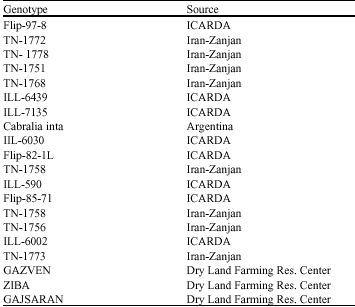Research Article
The Study of Seed Yield and Seed Yield Components of Lentil (Lens culinaris Medik) under Normal and Drought Stress Conditions
Department of Agronomy and Plant Breeding, Young Researchers Club of Islamic Azad University, Miyaneh Branch, Iran
Ali Haghnazari
Faculty of Agriculture, University of Zanjan, Iran
Fared Shekari
Faculty of Agriculture, University of Zanjan, Iran
Ali Faramarzi
Department of Agronomy and Plant Breeding, Islamic Azad University, Miyaneh Branch, Iran














